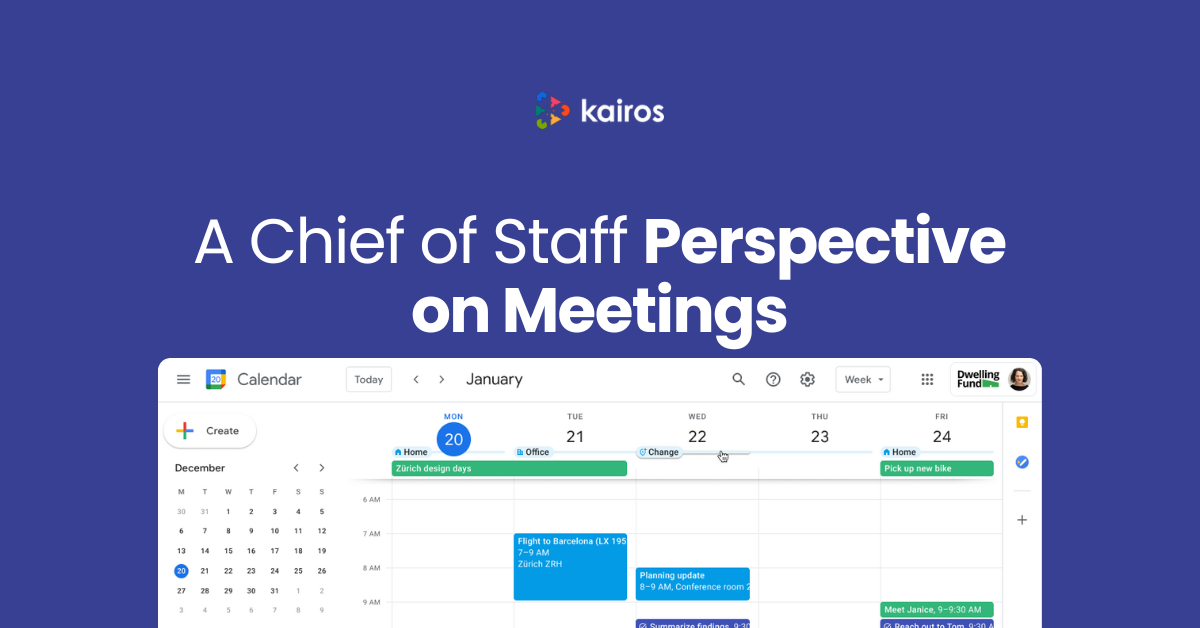Mastering the Art of Effective Meetings: From Assessment to Execution
Are Your Meetings Unproductive? Here's How to Tell
If your meetings feel more like a time vortex than a productivity boost, it’s time to ask some tough questions. A meeting assessment is your first action item. Assessments uncover key trends, overall performance and allow leaders to make swift strategic adjustments.
Start by assessing whether your meetings check off any of these red flags:
- No agenda was sent beforehand (big yikes).
- The meeting ran late—or started late.
- Half the team was multitasking instead of engaging.
- One person dominated the conversation while others stayed mute.
- No clear decisions, action items, or responsibilities were assigned.
- There wasn’t a follow-up summary.
- There’s no process for feedback to improve meetings.
- The meeting was an update-only session (email is a free service).
If two or more of these points hit home, you’ve got a meeting problem. And it’s not just annoying—it’s expensive.
Meetings that lack focus force workers to constantly context switch, which our research shows can cost up to 20 minutes of lost productivity per switch. Add three meetings to someone’s day, and that’s an extra hour of brain-drain on top of meeting time itself. It’s a recipe for burned-out employees, fractured company culture, and a strained bottom line.
Want better results? Cut the fluff, minimize unnecessary meetings, and watch as focus and productivity soar. Not only does this lighten the mental load for your team, but it also creates a sharper, more efficient work environment. Less context switching, more winning.
The Meeting Mastery Formula
Mastering meetings starts with a simple framework: think of each meeting in three phases—before, during, and after. By treating each step as equally important, you can transform meetings into catalysts for creativity and progress.
Before the Meeting
- Set a Clear Agenda: Share the goals and topics upfront so everyone can prepare. Better prep = better ideas. For more ideas on how to structure meetings and set clear objectives, check out our science-backed research here.
- Invite Only the Essentials: Focus on who really needs to be there—smaller groups often mean sharper discussions. This is one of the key solutions for too many meetings.
- Offer Prep Options: Use pre-meeting surveys or feedback forms to include quieter voices or those who prefer to contribute asynchronously.
- Share Roles: Rotate jobs like facilitator or note-taker to give everyone ownership and avoid groupthink.
During the Meeting
- Speak as a Team: Swap “I” for “we” and keep the language open and inclusive. Simple shifts go a long way.
- Balance Input: Use techniques like round-robin or open-ended questions to make space for everyone.
- Mind the Mic: If someone’s monopolizing, invite fresh perspectives by saying, “Let’s hear from others we haven’t yet.”
- Break It Down: For big groups, split into smaller teams for deeper conversations, then share back.
After the Meeting
- Share the Highlights: Send a quick recap of key points, decisions, and action items. It’s not just for the note-taker; it’s for everyone to stay on the same page.
- Ask for Feedback: A super-short survey works wonders. What went well? What could be better? Bonus: keep it anonymous for real honesty.
- Circle Back on Ideas: If someone’s brilliant thought didn’t get its moment, follow up 1:1. It shows you’re listening and value their input.
- Keep the Chat Going: Let the team know feedback and ideas are always welcome. Inclusivity shouldn’t clock out after the meeting ends.
Final Thoughts
When we tackle unproductive meetings head-on, we don’t just free up more time for meaningful work—we’re improving team cohesion. The result? A workplace where collaboration thrives, decisions are clear, and employees feel empowered to contribute in ways that move the needle. By getting intentional with how we structure meetings and by using tools to track progress, we can create a culture where meetings truly serve the work instead of stealing from it.
Ready to level up your meetings? Become a meeting master in less than 6 weeks with team collaboration software like Kairos. It can help you run meeting assessments, set clear objectives, and measure team collaboration, so you make the most of every minute. Let’s transform your meeting culture and reclaim your team’s time.
.png)

